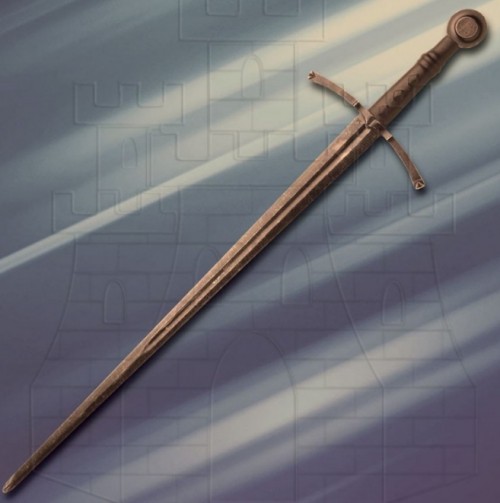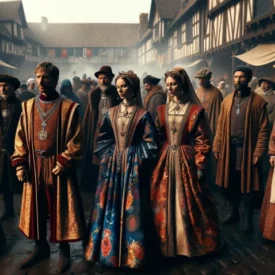Henry V of England was born at Monmouth Castle on September 16, 1387. He was the second son of Henry IV and Mary de Bohun and thus Prince of Wales and heir to the English throne. From the beginning of his reign it was his main objective to claim for England the French possessions that he considered as his: the duchies of Aquitaine, Guyenne, Gascony and Normandy, which at that time meant, more or less, a third of the kingdom of France.

The English would lose Aquitaine under the reign of Juan Sin Tierra (1199-1216), brother of Ricardo Corazón de León and then they would lose the other dukedoms under the reign of Eduardo III, in the midst of the Hundred Years’ War. Henry V decides to resume the fight to recover these states, and he will succeed, with unimaginable luck: the attacks of madness suffered by King Charles VI of France and the civil war in that country between the dukes of Burgundy (John Fearless) and of Orleans, they turned that moment into an ideal moment for Enrique to decide to attack.
Henry raised a large fleet, modernized the recruitment system, and added new weapons and artillery for his large army: he crossed the English Channel and in September 1415 laid siege to the strategic city of Harfleur, situated on the estuary of the Sign. Despite having taken it, the site had caused so many casualties to the English that Henry decides to withdraw to Calais to return to England. Along the way, he and his army were overtaken by the French at Agincourt, where he won a resounding victory despite being outnumbered.

This was Henry’s final victory: at Agincourt (October 25) he captured important French nobles, including the Duke of Orleans himself, the king’s cousin, who would not be released from captivity in England until 1440. He also recovered three quarters parts of the territories that in his theory corresponded to him. But, as a skilful statesman that he was, Henry V decides to join the royal dynasty of the Valois by marriage, soliciting the hand of the young Princess Catherine of Valois, the youngest of the six daughters of King Charles VI and Queen Elizabeth of Bavaria. At the same time that he managed his marriage, he pressured the French sovereign to recognize his victory and name him legitimate heir to the throne of France.

In this way, the Treaty of Troyes of 1420 is signed, by which Carlos VI recognized Enrique V as his sole heir after his marriage to Catalina, celebrated in the cathedral of the same city of Troyes on June 2. of that year. In the treaty it was stipulated that the descendants of Enrique V and Catalina would be the successors of King Carlos VI upon his death. Likewise, the Treaty disinherited his son the dolphin Carlos, whom his own mother Isabel accused of being a bastard. The signing of this agreement, which was equivalent to the end of the French crown, produced a great wave of patriotism: many of the great French nobles —such as the dukes of Brittany, Alençon, Berry, and others— rejected the treaty and maintained the legitimacy of the rights of the dauphin as heir.

At the end of 1420 Henry decides to return to England, taking his wife Catherine with him. From her marriage an only child will be born: the future Henry VI (Windsor Castle, December 6, 1421- assassinated, Tower of London, 1471), successor of his father on the thrones of England and France. As the situation in France was convulsive and insecure, Enrique V decided to return to the Gallic country at the beginning of 1422, leaving his wife and son in England. He would never see them again. Suffering from dysentery, he decides to make one last effort to preserve the gains derived from his French victories. Already so weak that he could only be carried in a litter, he died at the Château de Vincennes on August 31, 1422, sixteen days before his 35th birthday. His body was transferred to England and is buried in Westminster Abbey.

This is another beautiful functional sword of Henry or Henry V, replica of the sword found in the tomb of one of the greatest kings of England. Our replica is a one-handed sword forged to the standards of the time. The only difference is that our blade is made of mild carbon steel, a material that was not available to master gunsmiths at the time. The hilt and scabbard are made of wood covered with leather.

DATA SHEET:
Length 88 cm.
Blade Material: Carbon Steel
Blade length 70 cm.
Weight 1.3kg.
Sheet width (in the guard) 4.5 cms.
Manufacturer: CASS HANWEI (PAUL CHEN)









